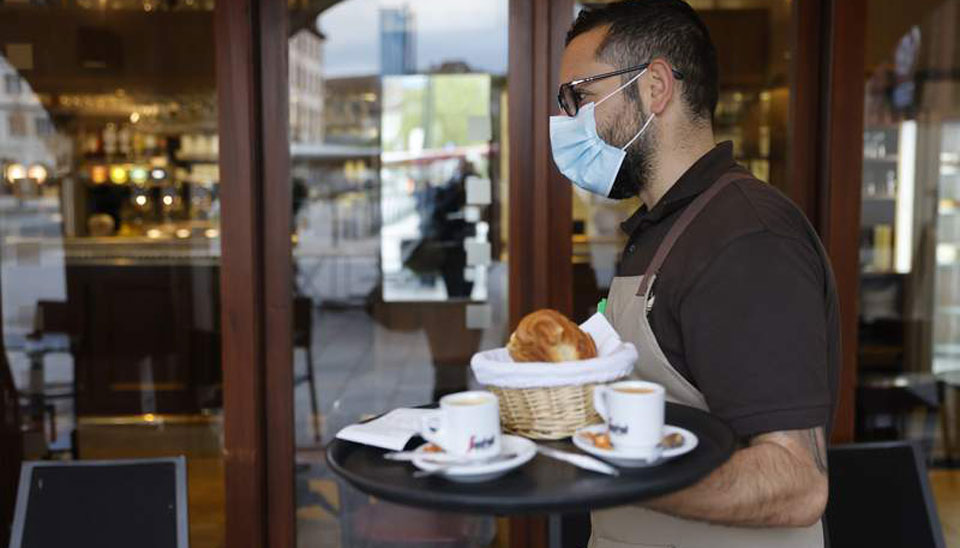
“The restaurant business can be seen as a class struggle between the groomed, pressed, articulate charmers working in the dining room and the blistered, stained and profane grunts in the kitchen.” – Pete Wells, NYT restaurant critic
In 2015 a movement began to make waves in the restaurant industry—a movement of education about the prevalent class disparity in the restaurants of our major cities. The first big splash came from acclaimed New York restaurateur Danny Meyer when he abolished tipping in all his restaurants and instituted a flat rate service fee.
From there, long-time anti-tipping advocates added their voices, highlighting class problems that remain invisible in the department of labor statistics.
The Atlantic and Washington Post both ran extensive articles on the issue and potential solutions that year. The revolution was coming; we were all going to achieve livable wages and equality within our little portion of the world. But, the revolution died down and for a lot of my fellow line cooks at that time, their dreams of cooking professionally died along with it. Talented individuals somehow seemed to lose interest in toiling in sweltering high-end kitchens for mere peanuts.
Aspirations of opening innovative bakeries and restaurants—concepts that we used to share eagerly with anyone who would listen—were now replaced by the terrified silence of workers with multiple-job exhaustion and financial insecurity.
This disparity comes from the differing income sources of front-of-house (FOH) and back-of-house (BOH) employees. Convention dictates that the restaurant pays BOH employees an hourly wage according to stagnant minimum wage standards.
Meanwhile, individual customers primarily pay FOH employees via the “tip pool” or a similar system. These employees earn less than half the local minimum wage before tips, which leads to financial instability when the business fluctuates throughout the seasons and even weeks. The business then becomes incapable of paying for quality labor and will suffer from high turnover and training losses as the market continues to weaken. Simply put, everybody loses.
The system I outline below offers a way to guarantee a livable base pay rate for all employees. In addition, it provides equal access for all employees to the bonus earnings of a busy weekend or holiday.
These earnings increase when restaurants retain the skilled labor necessary to capitalize on these peak times. All facets of the operation improve individually and create a restaurant that is more successful overall.
A minor restructuring that marries the concepts of wage and gratuity is the simplest solution. Rather than having the business pay the BOH and the guests pay the FOH, Vincent Bistro has combined both systems to give everyone the maximum take-home earnings of gratuity pay coupled with the income stability of standard payroll. After reviewing our means and general payroll spending, we decided $20/hr is a reasonable, working base pay rate for ALL employees within our business—a fair wage that is often unattainable through traditional means.
To achieve this seemingly unrealistic standard of pay, we use the same strategies developed by predatory business owners that normally maximize profits for the business and its investors, and instead use them to distribute value back to the laborers.
The first step, unscrupulous as it may sound, is to legally define all gratuity collected by the business as donations, enabling our staff to share more equitably.
At the end of the night, FOH staff calculate the total of all gratuity collected and divide it among all working employees. This amount equates to an hourly pay rate, usually $10-15/hr. Payroll funds then kick in from the business to ensure everyone makes at least $20/hr for their time. If, on busier nights, gratuity exceeds $20/hr for employees, the hourly pay rate increases to reflect those earnings. For example, on Saturday, September 19, Vincent was able to pay all employees—from host stand to dish pit—just shy of $34/hr for a standard 7-hour shift. That night, our dishwasher earned approximately $238 instead of the $105 he would have received at Chicago’s minimum wage for exactly the same amount of work. On slower nights with less business and therefore less gratuity, we offer “shift cuts,” a common practice of eliminating working hours when less labor is required.
Thus far we have found that most of our employees are able to appreciate an extra day off work rather than stress about missing a day of income not needed.
So, we can clearly see the benefit from the BOH perspective, which is where I’ve spent most of my career. But let’s not forget about our essential counterparts out front taking care of our guests and serving our food on the clean plates from the dish pit. Normally, a server at Vincent earns the city-mandated minimum pay of $6.40/hr. This is considerably higher than the federal minimum of $2.13/hr, but still, a negligible rate compared to costs of living, especially as much of that disappears into payroll deductions such as taxes.
On top of that pay, the FOH also averages 20% of sales as gratuity. Standard weekend nights will see about $5,000 of sales through beverage and food, generating an additional $1,000 in gratuity shared by a staff of five tipped employees, each earning $200 gratuity plus $44.80 in pay for that busy shift, equating with the Saturday example above.
Under the new system, servers can still expect this kind of pay from busier nights with increased gratuity, but also they can also rest assured that all their time spent on the clock is being paid out at a minimum rate of $20/hr, even in decreased business. This pay system creates a sense of teamwork across the house divide, increases a sense of earnings unity, and instills pride in one’s place within the microeconomy.
By combining income sources for all employees, we have both stabilized and equalized the income of our employees. Of course, paying employees $20/hr on nights of decreased business can seem risky, but according to our last Profit and Loss analysis, over the last three months, direct payroll has averaged approximately 34% of business expense—just 4 points above the 30% industry standard of labor spending.
This percentage shows that, while earning has stabilized and increased for the staff, payroll spending has remained largely unchanged from more traditional models. From the laborer’s perspective, BOH employees are able to earn their fair share of gratuity and FOH employees are able to plan their finances more reliably, rendering the best benefits of both systems accessible to all employees with fewer potential pitfalls.
Our system of integrating income sources allows employees to choose, even to specialize in, the tasks they like performing rather than the ones that pay the most or demand the least. This system motivates the individual simultaneously to become a greater part of the community and to take more pride in their work. Clean dishes, great food and drink, and charming service are all equally important factors in a quality experience dining out. And when every employee has a share in succeeding at every part of that experience, we all win. It’s time restaurants all paid reliable and livable wages on both ends of the house.










